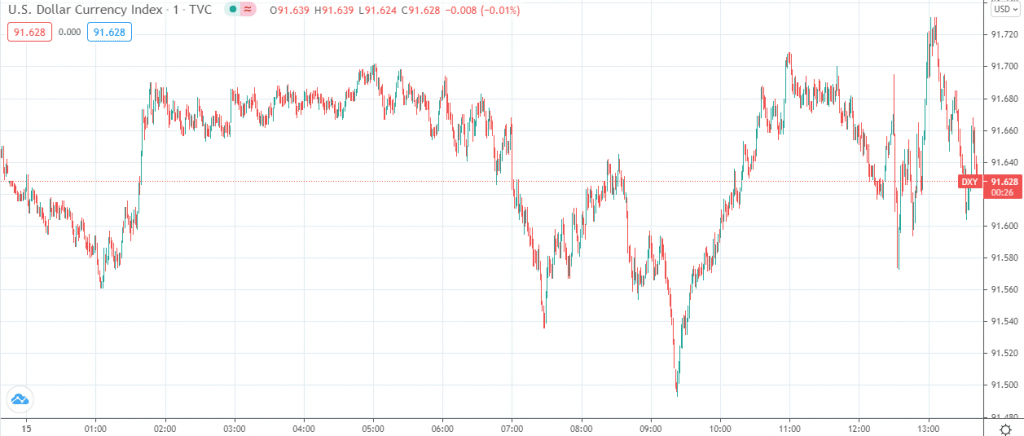
- The United States has formally accused the SVR, a Russian foreign intelligence service, of the SolarWinds hack carried out early this year. Consequently, the US government is initiating a range of sanctions against targeted Russian businesses and individuals. Now, certain companies and debt with Russian ties are blacklisted from the US-led global financial ecosystem.
- As soon as the news broke on Thursday at around 04:00 am UTC, the USD/RUB pair jumped 1.97% to 77.511 – the intraday peak so far – by 07:00 am UTC.
- Lower US bond yields sucked the air out of the US dollar, leaving it weak against majors such as the euro and the British pound.
Retail sales are up, but treasury yields are stuck in decline mode
Loosening of restrictions on movement in parts of the US throughout March enabled more Americans to spend on retail shopping. Retail sales data for March best explains the impact of the reopening. The latest government data – released early Thursday – show retails sales surged 9.8% during the month, which far outstrips consensus expectations. The last time the Commerce Department reported such a margin in May 2020, when the economy was unshackling itself from the bonds of the pandemic.
Yet, the positive figures were not sufficient in persuading the forex market to snap up more greenbacks. The US dollar index (DXY) was down 0.01% (to 91.662) at the time of writing, which is an improvement from the day’s lowest point at 91.497 at 05:00 UTC Thursday. Though this situation might be mind-boggling, one can easily explain its cause.

Figure 1: US dollar index performance on Thursday
The reason for the greenback’s underperformance against majors when retail sales data is positive is declining Treasury yields. Last month, investors were hoping that the US Fed would tighten interest rates in response to the excess liquidity from the recent stimulus package. As a result, the Treasury yields surged, but the scenario is different this month.
US Treasury yields’ performance over the past month has been dismal, declining 11.11%. The performance of the past five days is at -2.82%. At the time of writing, the yield for the US 10-Year Treasury Note was flirting with 1.599% after closing at 1.641% on Wednesday.
The Russian ruble is the biggest loser today
Thursday was a hostile day in the market for the Russian ruble. The currency was already in the red year-to-date at -2.3% against the greenback before the reports of new sanctions flooded the wires. The USD/RUB pair was up 0.70% at press time.
Even worse for the pair is that the selling pressure in the market seems strong enough to carry through a few more days. Although the MACD (in the figure below) shows the number of sellers thinning, the RSI indicates there is strength for the market to dump more of the pair.

Figure 2: USD/RUB (1-day price chart)
A weaker dollar is supporting commodity currencies
While addressing an Economic Club of Washington, DC event on Wednesday, US Fed chair Jerome Powell said the Fed would begin tapering the bond purchasing program well before initiating any interest raise policy. The market interpreted these comments as an implication the greenback will remain weak for the foreseeable future.
The weak dollar generates increasing demand for commodities in global markets, and commodity currencies are the ultimate winners. On Thursday, the Australian dollar finally managed to break out of a tight trading band established for several weeks now by jumping to 0.7754 against the USD. At the time of writing, the highest peak of the day was at 0.7759, established at 05:22 EDT.







Leave a Reply